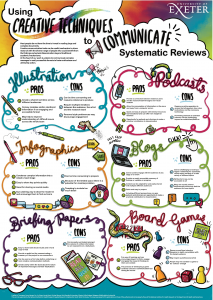October is Health literacy month1. Health literacy is one of the parts of the information literacy definition, and in recent years, it has become increasingly clear how important an understanding of health research and reporting is to all of us. The onus is not just on the consumer of the information to understand the message, but the creators of the evidence to make their message understandable to the widest possible audience.
Increasingly now, people also need to have an understanding of health research and its reporting in the media as well as the basic understanding of their own health conditions and medication. Nutbeam2 argues that there are three levels of health literacy: functional literacy (basic skills in understanding information in order to function in society); interactive health literacy (applying new information to different circumstances); and critical health literacy (the highest level of skills to have agency over events and situations). Understanding of media reporting and health research can be viewed as a higher level again. The complexity of health research information can be a major barrier in people’s understanding.
The research community is coming to realise their role in making health evidence accessible to the public. A recent systematic review3 on creative techniques for communication found that a co-production plan for communication with potential users of the evidence is key to getting a clear message out. The group found that what is needed from researchers is awareness of the need to present in different formats for different people, to use illustrations and diagrams to make the message attractive and memorable, and to want the message to engage those receiving it and to encourage them to put the recommendations into action themselves.

They recommend the use of infographics to make evidence easy to engage with, and also looked at “graphic medicine”, using comics for patient care and education. The research found that illustrations can be costly to produce in terms of time, or if using professional artists and designers, but ultimately worthwhile. The paper also looked at production of podcasts, board games, social media content and blog posts, the pros and cons of each of these can be seen in the illustration below. The author’s commentary4 on this research from the National Institute for Health and Care Research is an excellent example of using blog posts to promote evidence.
1. https://www.healthliteracymonth.org/healthliteracymonth/hlm-home [accessed 10.10.22]
2. Nutbeam D, Health literacy as a public health goal: a challenge for contemporary health education and communication strategies into the 21st century, Health Promotion International, 2000 September; 15( 3): 259–267, https://doi.org/10.1093/heapro/15.3.259
3. Coon JT, Orr N, Shaw L, Hunt H, Garside R, Nunns M, Gröppel-Wegener A, Whear B. Bursting out of our bubble: using creative techniques to communicate within the systematic review process and beyond. Syst Rev. 2022 Apr 4;11(1):56. doi: 10.1186/s13643-022-01935-2. PMID: 35379331; PMCID: PMC8977563.
4. https://evidence.nihr.ac.uk/alert/creative-communication-tools-can-bring-research-findings-to-a-wider-audience/ [accessed 10.10.22]
Text description of the infographic is available. The image in the original paper is also available.
Pip Divall – Clinical Librarian Services Manager, University Hospitals of Leicester NHS Trust. CILIP Information Literacy Group Health Sector Rep.



